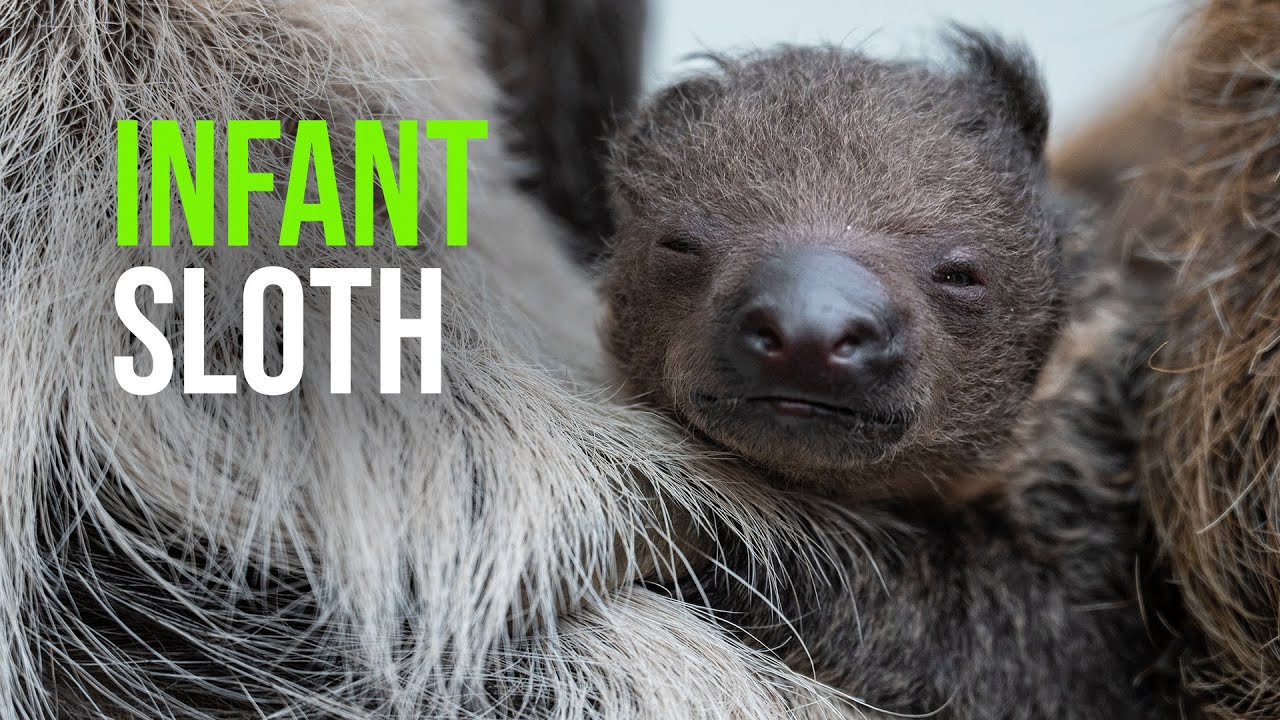- Understanding the biology and behavior of sloths, with a focus on baby sloths
- The importance of zoo management in conserving sloth populations
- Highlighting wildlife conservation efforts particularly related to sloth habitats
- Insights from a captivating video showcasing a long-awaited baby sloth
- Encouraging public engagement and education on sloth conservation
Sloths are fascinating creatures that have captured the hearts of many due to their slow and deliberate movements. These arboreal mammals are native to the rainforests of Central and South America and spend most of their lives hanging upside down in trees. There are two main types of sloths: the two-toed and the three-toed. Though similar in their slow-paced lifestyles, these species differ in various aspects, from physical characteristics to habitat preferences. Understanding sloths, particularly baby sloths, requires a dive into their unique biology and behaviors.
Baby sloths, like many other mammals, are incredibly dependent on their mothers for survival in their early stages. Sloth gestation periods are typically around six months for three-toed sloths and just over a year for two-toed sloths. Upon birth, a baby sloth clings to its mother’s belly for support and nourishment. This attachment is crucial for its development, as it learns essential survival skills such as climbing and identifying edible leaves from its mother.
In discussing sloth behavior, it’s essential to note their dietary habits. Sloths are herbivores, feeding primarily on leaves, fruits, and flowers. Their diet is low in energy, explaining their slow movements and low metabolic rates. This energy conservation strategy is particularly critical for baby sloths, who must grow efficiently while expending minimal effort. Sloths have a unique symbiotic relationship with the algae that grow on their fur, providing camouflage and benefiting from the sloth’s slow movements and infrequent grooming.
The preservation of sloths in the wild is crucial, and here is where zoo management plays an essential role. Modern zoos are no longer just attractions but are vital conservation centers, focusing on research, breeding programs, and educating the public about the importance of wildlife preservation. For sloths, zoos offer a haven against threats like habitat destruction, hunting, and the illegal pet trade. Zoo management’s role in the protection of sloth populations involves creating environments that simulate their natural habitat, which is vital for their health and well-being.
Creating these environments entails not only physical simulation but also a focus on dietary needs and social structures that mirror their natural ecosystems. Proper husbandry practices include temperature and humidity control, as both factors are critical in maintaining their health. Enclosures must also provide ample vertical space and enrichment activities to encourage natural behaviors such as climbing.
Efforts to conserve sloth populations extend beyond the confines of zoos, focusing on preserving their habitats in the wild. Deforestation poses one of the most significant threats to sloths, as it disrupts their natural habitat and poses risks to their survival. Many conservation organizations are actively working towards protecting and restoring rainforest habitats. These efforts often involve reforestation projects, legal advocacy for conservation policies, and community-based initiatives that promote sustainable living practices among local populations.
The captivating video showcasing a long-awaited baby sloth offers a rare glimpse into the early life of these creatures. Such visuals are powerful tools in raising public awareness and engagement in conservation efforts. The video might reveal a baby sloth nestled against its mother, an intimate bond that illustrates the nurturing aspect of sloth behavior. Through this lens, viewers can appreciate the challenges that sloths and conservationists face, promoting a deeper understanding and empathy that can drive public support for preservation initiatives.
Public engagement and education are crucial components in wildlife conservation. By informing people about the biology and behavior of sloths, conservationists can generate support and understanding. Educational programs often highlight the impact of human activities on sloth populations and emphasize the small yet significant steps individuals can take to contribute to conservation efforts, like supporting ethical tourism and responsible consumption.
In conclusion, the story of the long-awaited baby sloth is not just a heartwarming tale but a call to action for conservation. By understanding the behaviors and needs of sloths, recognizing the role of zoo management, and highlighting wildlife conservation efforts, we can all contribute to a future where these curious creatures continue to thrive. Each interaction, video, and educational story draws us closer to these fascinating animals and underscores the importance of ongoing conservation endeavors. Through collective awareness and proactive measures, the survival of sloths and their rainforest homes can be secured for generations to come.
*****
Source Description
Please join us in welcoming the newest addition to @DenverZooConservationAlliance Denver Zoo’s animal family—a highly-anticipated sloth baby! After months of patiently waiting, officials are delighted to share that their Linne’s two-toed sloth baby finally made its debut on Thursday, January 26 to parents Charlotte and Elliot. This healthy birth is a conservation win for the slow-moving species, and Denver Zoo gives a huge shoutout to their Tropical Discovery animal care and veterinary medicine teams who provided specialized care throughout Charlotte’s pregnancy to ensure both mom and baby were thriving. A recent neonate exam confirmed that Charlotte and her adorable new baby continue to thrive in their Tropical Discovery home and that this little one is strong, healthy, and nursing like a pro. Charlotte does have access to the public-facing part of her treetop habitat, so you may be able to catch a glimpse of mama and her tiny bundle during your next visit the Zoo! While sloth babies usually cling to their mothers for six months and may continue nursing up to a year, you can take a look at this cutie in the Zoo’s latest Baby Bulletin, presented by SCL Health, now Intermountain Healthcare. Stay tuned for more updates, including how you can take part in naming Denver’s newest resident!
Video Credit: Keeper Daria G., Keeper Derek C .and Web and Graphic Designer Rylee B.

